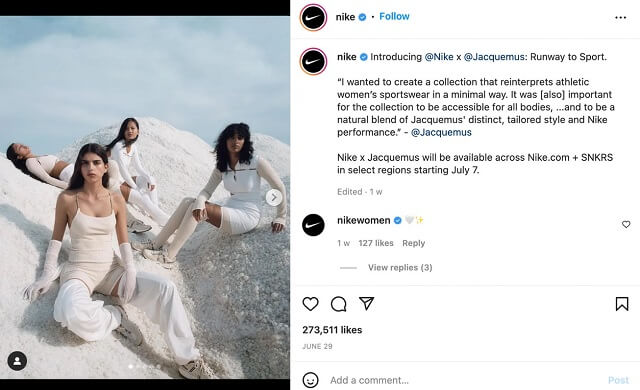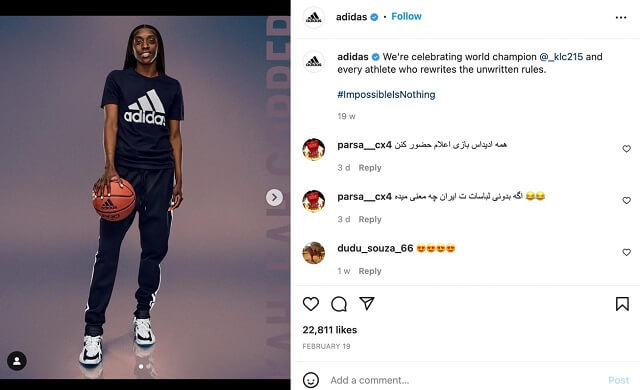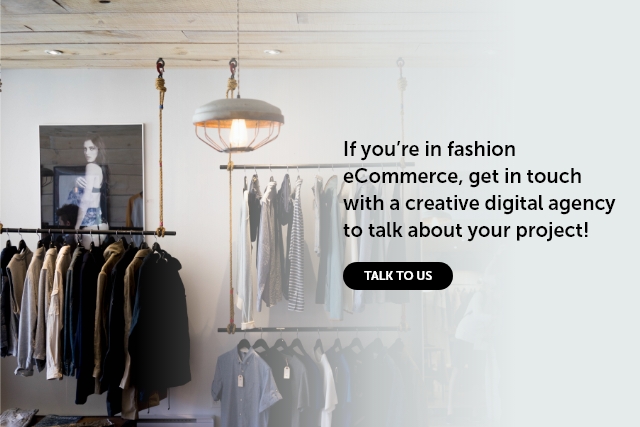7 Premium Footwear Digital Marketing Strategies to Boost Your Brand Value
You’d have to be living under a rock not to know that the luxury footwear market is booming.
The figures back it up as well! In fact, the global luxury footwear market is currently valued at $30.52 billion. Projections indicate that this market will likely grow at a rate of 3.85% between now and 2028.
One of the reasons for this is because people have more disposable income available. In fact, the number of millennial and Gen Z millionaires has doubled over the past year. One of the things they’re spending on is luxe footwear.
But what exactly is luxury footwear?
This footwear is known for its unique and enhanced qualities. You can expect superior material, durability, and comfort, as well as a unique design.
Product demand is being driven by the growing preference for attractive luxury footwear as a status symbol. Plus, consumers today love to flaunt international brands.
So, with that in mind, let’s take a look at some of the different ways premium footwear brands can capitalise on this.
Why Do Premium Footwear Brands Need Marketing?
To understand why marketing is important for such a niche market, let’s start from the beginning.
In simple terms, “the marketing of luxury products is luxury marketing”, and luxury products are those which are desirable, unique, and help in building the social rapport of the consumer.
Luxury products are designed to stand out, and as a result, they also make you stand out. So, when it comes to luxury footwear, the need for this is rather obvious.
With so many luxury brands available, you must ensure that your bespoke product stands out. Your audience needs to know about your brand and what you stand for; a reputation needs to be built. From there, your products will become synonymous with the name, and the rest will fall into place. If you’re asking yourself, How can I promote my shoe brand?” keep reading to find out.
7 Marketing Strategies for Premium Footwear Brands
While the strategies we share can be a great source of inspiration, it’s worth pointing out that the best strategies will always come from clarifying your goal, breaking it down, and brainstorming brand-specific solutions with your team.
1. Tell your brand story
Communicating the story behind your footwear range and explaining the values that define it is a fundamental part of effective luxury footwear marketing. Explaining what your brand represents or the values you stand by will make it more straightforward to develop advocacy for your brand.
Share the journey, the craftsmanship, and the unique elements that set your brand apart. Use behind-the-scenes content, founder stories, and customer testimonials to make your narrative compelling and relatable.
2. Take advantage of visual social networks
When marketing luxury footwear, photographs are one of the best ways to evoke emotions that we connect with experiencing something exclusive. As such, visual social networks like Pinterest provide an opportunity for luxury brands to raise brand awareness and advocacy.
Use high-quality images and videos, and consider leveraging Instagram Stories and Reels for more dynamic content. According to Hootsuite, 83% of Instagram users discover new products on the platform, making it a valuable tool for reaching potential customers.
3. Use Facebook Ads to reach luxury shoppers
Facebook Ads are one of the most valuable forms of digital advertising due to the high level of segmentation and targeting you can do.
Take advantage of Facebook’s robust analytics to fine-tune your ad campaigns. Use lookalike audiences to find new potential customers who resemble your best existing ones, and experiment with different ad formats, such as carousel ads or video ads, to see what resonates most with your audience.
4. Don’t underestimate the value of good SEO
Google is one of the most effective channels for helping luxury shoppers find products, learn more about brands, and make their purchases. If your site isn’t SEO-friendly, you’re letting a lot of potential traffic and revenue slip through your fingers.
Regularly update your website content with relevant keywords, and ensure your site is fast, mobile-friendly, and secure. Investing in a strong SEO strategy can significantly increase your visibility and attract high-intent shoppers.
5. Create aspirational content to educate customers
Creating highly visual and aspirational content is one of the most compelling ways to generate traffic and engagement. While typical in many other niches, content marketing is massively underused even though it is greatly effective for luxury brands.
Develop content that not only showcases your products but also inspires and educates your audience. This could include style guides, trend reports, and interviews with fashion influencers or designers.
6. Create a feeling of exclusivity
Exclusivity is essential to luxury brand marketing as it maintains consumer desire through scarcity and rarity. If anyone could walk into Louis Vuitton and buy a handbag, Louis Vuitton would lose their appeal to those who wish to have something that others can’t get access to.
Exclusivity can be created online through private member groups, concierge services, or digitally delivered loyalty perks reserved only for previous customers. Consider hosting exclusive online events, such as private sales, to enhance the feeling of exclusivity.
7. Use the Metaverse
The world has gone digital, and so has the shopping experience. By making use of the fashion metaverse, your customers can experience your products in larger-than-life glory without having to leave their homes.
Explore opportunities in virtual reality (VR) and augmented reality (AR) to offer immersive shopping experiences. For instance, virtual try-ons and virtual stores can provide an engaging way for customers to interact with your brand and products in the digital space.
Footwear Brands with Successful Marketing Strategies
When it comes to luxury footwear, especially in the world of marketing, two brands stand out: Adidas and Nike.
What is Nike’s marketing strategy?
The Nike strategy is pretty simple but can become complex in its intricacies. They invest in developing the brand through emotional marketing and celebrity endorsements. They also create footwear featuring high-quality, market-leading technology and even go as far as to buy out competing sports brands.

What is Adidas ‘marketing strategy?
The brand focuses on designing, producing, and selling the best sports goods in the world. They spend 90% of their marketing budget on social media and digital campaigns. Adidas has also digitised the production process with 3D printing technology and robotics. They even curate personalised experiences to build a long-term connection with their consumers.

Latest Footwear Marketing Trends
Keeping up with the latest trends in footwear marketing is crucial! Here are some of the most impactful trends that are shaping the landscape right now.
1. Sustainability and Ethical Practices
Consumers today are more conscious of the environmental impact of their purchases. Brands that focus on sustainability and ethical practices are gaining more traction. This means using eco-friendly materials, promoting fair trade practices, and showcasing transparency in the supply chain. Highlighting these efforts in your marketing can build trust and loyalty.
2. Personalised Shopping Experiences
With advancements in AI and machine learning, personalised shopping experiences are becoming the norm. Personalised emails, targeted ads, and customised product suggestions can significantly enhance the customer experience.
3. Influencer Collaborations
Influencers continue to be a powerful force in digital marketing. If someone sees a celeb or a blogger they respect and follow in your shoes, they will want them too, right? Look for micro-influencers with engaged followings as well as more prominent figures to maximise your reach.
4. Augmented Reality (AR)
AR technology is revolutionising the way customers shop for footwear. Virtual try-ons allow customers to see how shoes look on their feet without stepping into a store. Incorporating AR into your online shopping experience can reduce return rates and increase customer satisfaction.
5. Social Commerce
Social media platforms are becoming more integrated with e-commerce, allowing users to purchase products directly through posts and stories. Utilise Instagram Shopping, Facebook Shops, and Pinterest Buyable Pins to streamline the shopping process and make it easier for customers to buy your products.
6. User-Generated Content (UGC)
Encourage your customers to share their experiences with your footwear on social media. UGC acts as authentic social proof and can be a powerful tool in building brand credibility. Feature this content on your website and social media channels to show potential customers real-life testimonials.
Common Footwear Marketing Mistakes to Avoid
While learning about the different trends and strategies you can use is always a good thing, it can be just as helpful to know what not to do! So, let’s take a look at some common footwear marketing mistakes so that you can avoid making them.
- Neglecting mobile optimisation – In a world where everyone is glued to their smartphones, having a mobile-friendly website is non-negotiable. Ensure your website is responsive and offers a seamless shopping experience on all devices.
- Ignoring customer reviews – Customer reviews are gold. They build trust and influence purchasing decisions. Failing to encourage and showcase positive reviews can hurt your credibility. Make it easy for customers to leave reviews and prominently feature them on your website and social media.
- Overlooking social media engagement – Social media isn’t just for posting pretty pictures of your latest collection. It’s a two-way street where engagement is key. Ignoring comments and messages from your followers can make your brand seem aloof and unapproachable.
- Lack of consistent branding – If your branding is all over the place, it can confuse customers and dilute your brand message. Ensure that your logo, colour scheme, and tone of voice are consistent across all platforms and marketing materials.
- Ignoring data analytics – Data is your best friend when understanding your customers and refining your marketing strategies. Ignoring analytics means you’re flying blind. Regularly review your data to see what’s working and what’s not. Use these insights to make informed decisions and optimise your campaigns.
- Not investing in high-quality visuals of your footwear – In the world of footwear, visuals are everything. Poor-quality images or videos can turn potential customers away. Do your products justice! Invest in professional photography and videography to showcase your products in the best light. High-quality visuals can make a huge difference in attracting and retaining customers.
- Overcomplicating the checkout process – A complicated checkout process can lead to abandoned carts and lost sales. Keep the purchasing process as simple and straightforward as possible. Minimise the number of steps and ensure your checkout is user-friendly and secure.
It’s Time to Put Your Best Foot Forward
When it comes to marketing luxury footwear or creating marketing plans for shoe bands, it’s all about focusing on the unique experience offered. Showcase what makes your brand different and why customers need to be interested in upgrading their lifestyle.

Subscribe To Us
Contributors
Categories
Subscribe To Us
Contributors
Categories

This website uses cookies so that we can provide you with the best user experience possible. Cookie information is stored in your browser and performs functions such as recognising you when you return to our website and helping our team to understand which sections of the website you find most interesting and useful. Third party cookies such as Google Analytics is also used on this site to provide analytics in order to better understand the user engagement on our site.
You can adjust all of your cookie settings by navigating the tabs on the left hand side.
Strictly Necessary Cookie should be enabled at all times so that we can save your preferences for cookie settings.
If you disable this cookie, we will not be able to save your preferences. This means that every time you visit this website you will need to enable or disable cookies again.







0.Comments